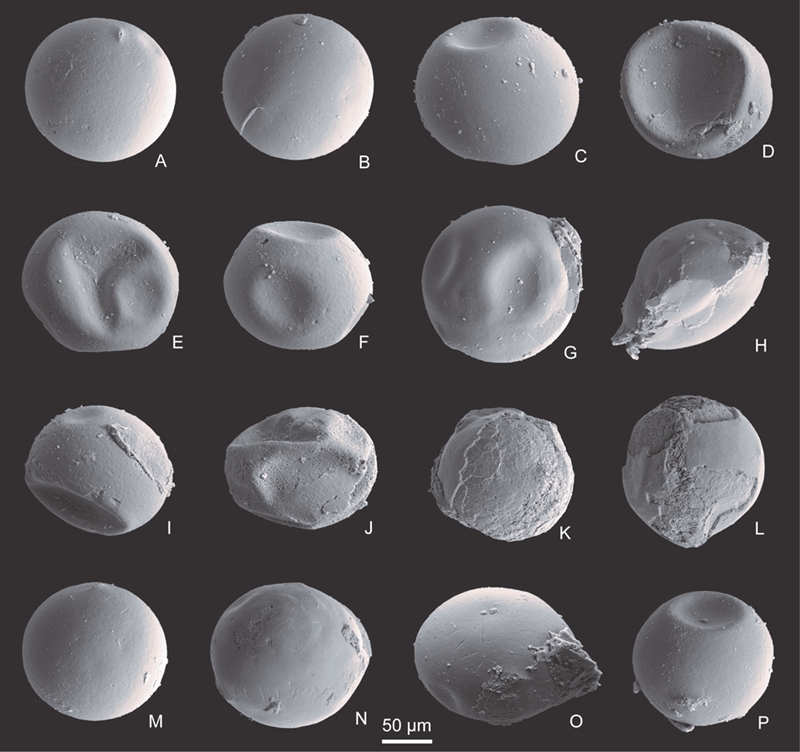A paper entitled “ Exceptional preservation of clam shrimp (Branchiopoda, Eucrustacea) eggs from the Early Cretaceous Jehol Biota and implications for paleoecology and taphonomy” by Dr. PAN Yanhong et al. has been recently published in Journal of Paleontology. Fossil eggs of clam shrimps (Spinicaudata) are rare and little attention has been paid to the study of their shape and microstructures. In this paper, Dr. PAN report the discovery of exceptional-preserved three-dimensional eggs from numerous specimens of Eosestheria elliptica Chen, 1976 from the lacustrine Early Cretaceous Yixian Formation in western Liaoning, China. These three-dimensionally preserved fossil eggs display a spherical shape with smooth surface, part of the tertiary envelop, and possibly the first embryonic cuticle that were previously unknown or ambiguous. EDS analyses of the fossilized envelop revealed a calcium phosphate composition. The material not only furthers our understanding of the biology of ancient clam shrimps, but also adds to our knowledge of the fossilization processes that are responsible for the exceptional preservation of the Jehol Biota. Related information of this paper: Yanhong Pan, Yaqiong Wang, Jingeng Sha, and Huanyu lIao, 2015. Exceptional preservation of clam shrimp (Branchiopoda, Eucrustacea) eggs from the Early Cretaceous Jehol Biota and implications for paleoecology and taphonomy. Journal of Paleontology, v.89, p. 369-376. Doi: 10.1017/jpa.2015.24. 
Three-dimensioanlly preserved eggs of Eosestheria elliptica Chen, 1976 
Results of energy X-ray spectrometer (EDS) for selected points analysis of elemental compositions and elemental maps of the uncoated slice (Information Source: Nanjing Institute of Geology and Palaeontology, CAS) |

